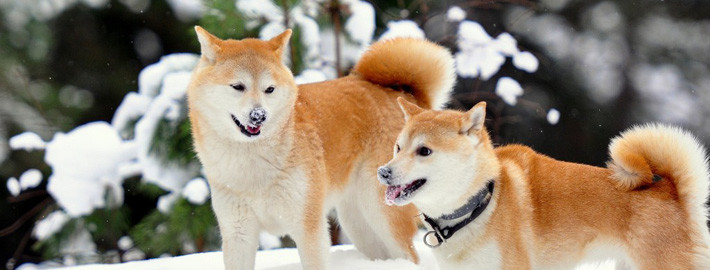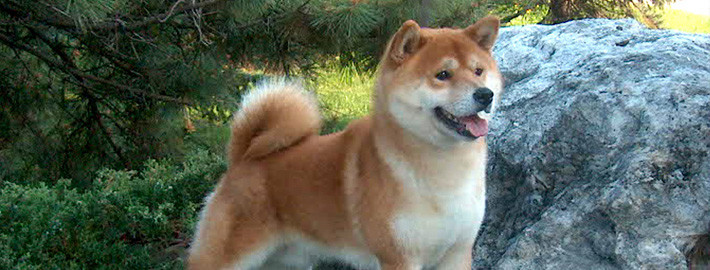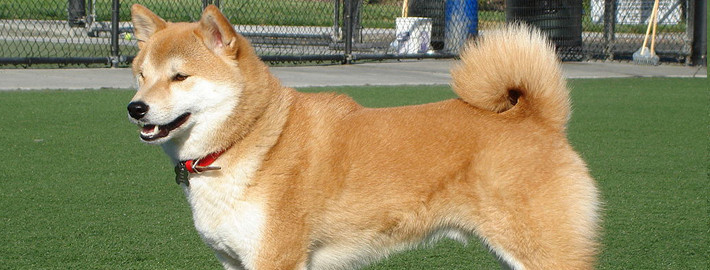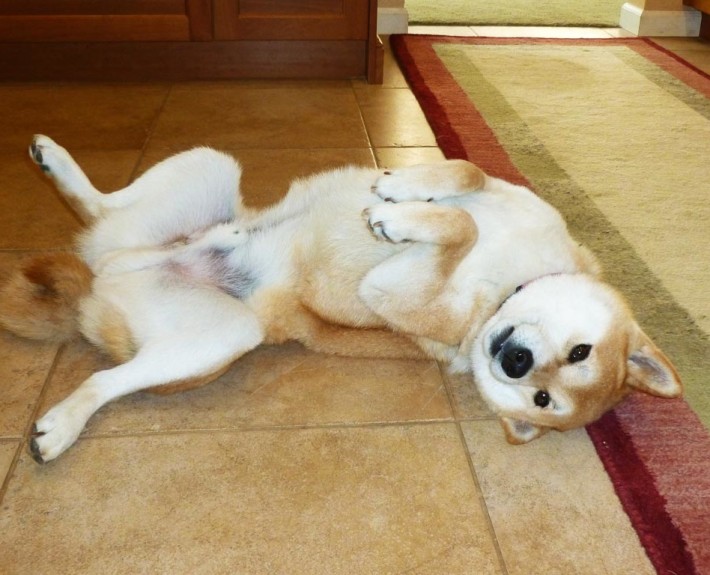What makes the Shiba Inu Unique?
The shiba inu is moderately compact, being slightly longer than it is tall. It has typical traits of dogs from Northern heritage: small erect ears, thick fur, powerful body and curled tail. Its expression is bold, spirited and good-natured. The gait is light, quick and agile, with an effortless, smooth stride. The double coat consists of a strong straight outer coat with a soft undercoat, imparting great insulation. These traits enabled the shiba to hunt small game through dense cover. Bold, independent and headstrong, the shiba is brimming with self-confidence. It is lively outdoors, yet calm indoors, as long as it gets daily exercise. It may be aggressive with strange dogs of the same sex and may chase small animals. It is a hardy breed, ready for adventure. Some tend to be headstrong and domineering. It is territorial, alert and reserved with strangers — ingredients making for an excellent watchdog. It is quite vocal; some bark a lot.
Breed Groups
Page Contents
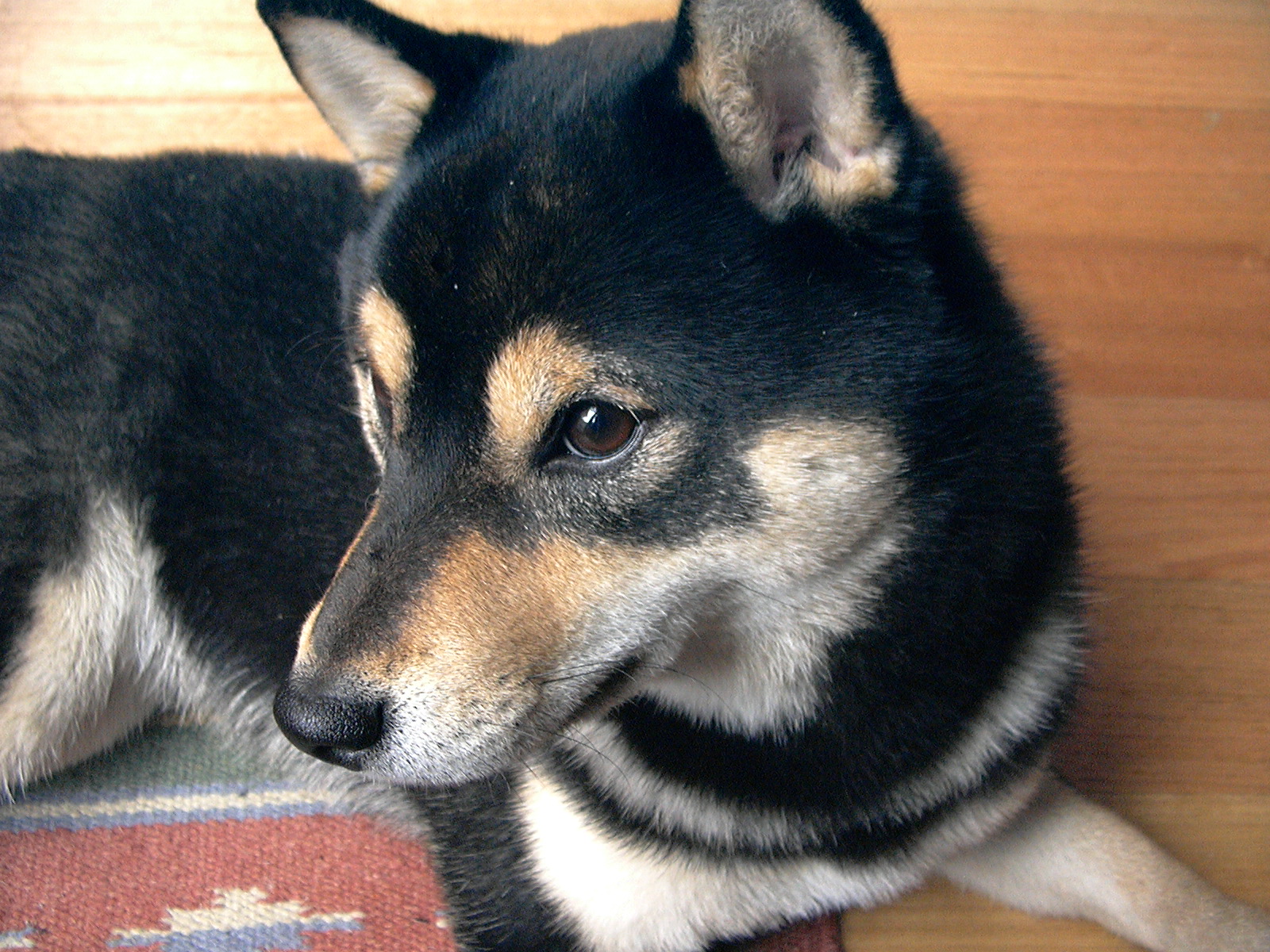
Is the Shiba Inu Right For You?
The Shiba has an independent nature and can be reserved toward strangers but is loyal and affectionate to those who earn his respect. The Shiba adapts well to different living situations, but must be exercised regularly on leash or in a secure area. Early obedience training and regular brushing are musts. If you are considering purchasing a Shiba Inu puppy, learn more. *Non-Sporting Group; AKC recognized in 1992.
*Ranging in size from 13 ½ to 16 ½ inches tall at the shoulder and 17 to 23 pounds.
*Bird/Small game hunter.
In 5 Words
- Alert
- Charming
- Faithful
- Keen
- Fearless
Characteristics
Learn About the Shiba Inu
Description
The Shiba is a small, compact dog. The head is in proportion with the body. The round muzzle has a moderate stop and tapers slightly toward the nose. The tight lips and the nose are black. The teeth meet in a scissors bite. The deep-set eyes are triangular in shape and dark in color. The eye rims are black. The erect ears are triangular in shape and small in proportion to the rest of the body. The front legs are straight. Dewclaws may be removed. The high-set tail is thick at the base, curled and carried over the back, either in a ring or with a sickle curve. The coat is double with a soft, thick undercoat and a stiff, straight outer coat. Coat colors come in red, or red with a little black overlay, black with tan markings, sesame with red markings, all with a cream, buff or gray undercoat. Markings should appear on the cheeks and sides of the muzzle, throat, underside and chest. There may be white on the legs, tip of the tail and above the eyes.
Short History of the Shiba
The Shiba Inu developed on the steep slopes of the Japanese mountains and was used to hunt both large and small game for many centuries. They were especially adept at hunting birds, although occasionally boar, bear and deer were their targets. There may be some Chow Chow in this breed’s history. The breed officially got its present name sometime in the 1920s. The first breed standard was written in 1934. In December of 1936, the breed was designated as a precious natural resource of Japan, through the Cultural Properties Act.
The Shiba Inu was entered in dog shows starting in the early 1930s. Most of these dogs came from the Yamanashi or San In areas of Japan, brought down from the mountains, and they were rough and variable in type and temperament. World War II almost extinguished the Shiba Inu breed. The war was closely followed by a massive outbreak of distempter in 1952 that almost finished the task. Those few dogs that were left were from three distinct bloodlines: the San In Shiba, the Mino Shiba and the Shin Shu Shiba. The modern Shiba Inu descends from these three lines. Today’s Shibas are elegant and very consistent in type. They retain their hunting instincts and remain independent, aloof and affectionate only to those who earn and deserve their respect.
The first known Shiba in America arrived in 1954, brought by an American soldier from Japan. In the late 1970s, more Shibas were imported from Japan by breed fanciers. The first litter was born in the United States in 1979, with both sire and dam imported by Julia Cadwell. The Shiba Inu was admitted to the Stud Book of the American Kennel Club in April of 1992. It became eligible to compete in the Miscellaneous class in June of 1992 and received full eligibility for regular classification in the Non-Sporting Group in June of 1993.
Temperament
Shiba’s tend to exhibit an independent nature and sometimes show dog aggression. This is more prevalent between female Shibas and is influenced by the breed’s strong prey drive. The Shiba Inu is best in a home without other small dogs or young children, but consistent obedience training and early socialization can make all the difference. The breed also interacts fairly well with cats.
From the Japanese breed standard:
A spirited boldness, a good nature, and an unaffected forthrightness, which together yield dignity and natural beauty. The Shiba has an independent nature and can be reserved toward strangers but is loyal and affectionate to those who earn his respect. They can be aggressive toward other dogs.
The terms “spirited boldness” (悍威 kan’i?), “good nature” (良性 ryōsei?), and “artlessness” (素朴 soboku?) have subtle interpretations that have been the subject of much commentary.
The Shiba is a relatively fastidious breed and feels the need to maintain itself in a clean state. They can often be seen licking their paws and legs much like a cat. They generally go out of their way to keep their coats clean, yet thoroughly enjoy swimming and playing in puddles. Because of their fastidious and proud nature, Shiba puppies are easy to housebreak and in many cases will housebreak themselves. Having their owner simply place them outside after meal times and naps is generally enough to teach the Shiba the appropriate method of toileting.
A distinguishing characteristic of the breed is the so-called “shiba scream”. When sufficiently provoked or unhappy, the dog will produce a loud, high pitched scream. This can occur when attempting to handle the dog in a way that it deems unacceptable. The animal may also emit a very similar sound during periods of great joy, such as the return of the owner after an extended absence, or the arrival of a favored human guest.
Caring for Your Shiba Inu
General Health
Like all breeds of this size, the Shiba can have Health issues. Most of these problems can be avoided with proper nutrition, hygiene, and regular visits to the vet.
The Shibas can have some hereditary defects, for which all reputable breeders screen their Breeding stock. patellar luxation will sometimes appear in Shibas. This ailment causes loose kneecaps and is usually not severe enough to be detrimental to a pet. An experienced veterinarian can detect this condition early on.
Moderate to severe patellar luxation can easily be corrected by surgery and the dog will lead a normal, healthy life.
Another health issue is hip dysplasia. It is not as serious in the Shiba as it is in large breeds of dogs but it can occur.
Something that many new owners do not know is that the Shiba can be prone to Allergies. If you suspect Allergies, you should take the animal to the vet as soon as possible as the symptoms can range from mild to very severe.
The Shiba may also suffer from Glaucoma. This can be detected early on through regular visits to the vet. As with many dogs, eye problems can present problems and owners are encouraged to have their dogs eyes checked regularly. These eye test are now easy to conduct and are worth the small added costs.
Another eye issue that all dog owners need to be aware of is PRA, Progressive Retinal Atrophy. This is an genetic disorder which makes prevention of the disease something of an issue. Research is being done on this issue ever now.
For those interested, much more information on the possible ailments that can be present in this size of animal can be found online or through your vet.
Grooming & Bathing
The Shiba has a clean, coarse, stiff, shorthaired coat that is easy to groom. Brush with a firm bristle brush to remove the dead hair and bathe only when absolutely necessary as it removes the natural waterproofing of the coat. This breed is a seasonally heavy shedder.
Exercise & Training
The Shiba Inu is an undemanding dog that will adapt to your circumstances, so long as it gets a daily walk. It is a very active dog and will be healthier and happier with regular exercise. This breed can walk for hours on end as it has tremendous endurance. The Shiba is a trainable breed but it should be kept in mind that they are also a very independent type of dog. They are best trained when the training begins early. This is important especially if the home has children or other animals in the house.
One of the issues that owner’s need to train the dog on concerns the Shiba’s instinct to be aggressive toward other dogs, especially those of the same sex. Neutering the dog will go a long way in taming this instinct but it will not completely remove it. For those Shiba’s that are no neutered, owners must be on alert when the Shiba is in close proximity to other dogs.

